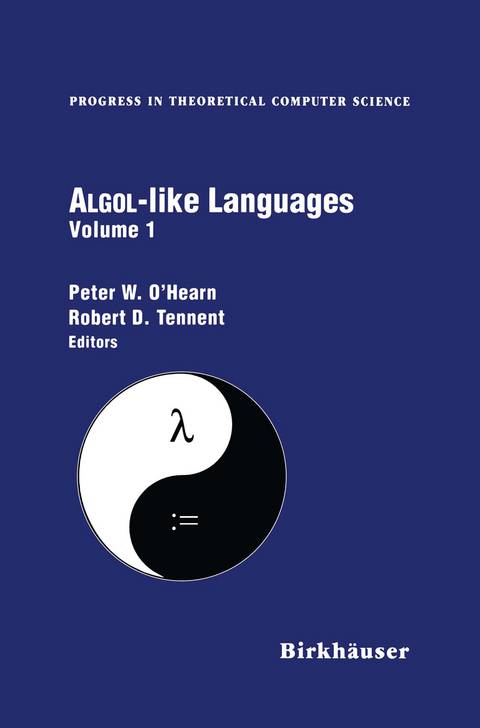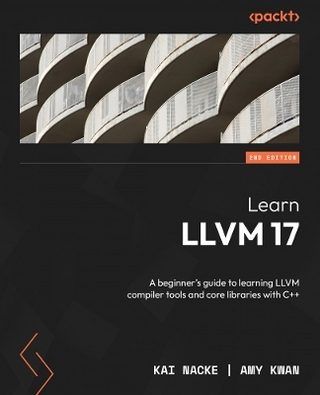
Algol-like Languages
Seiten
1996
Birkhauser Boston Inc (Verlag)
978-0-8176-3880-1 (ISBN)
Birkhauser Boston Inc (Verlag)
978-0-8176-3880-1 (ISBN)
In 1959 John Backus presented a paper on a proposed international algebraic language which evolved into ALGOL 60. This set of two volumes aims to review the attempts over recent years to use programming languages based on ALGOL 60, using Backus' original document as an introduction.
In recent years there has been a remarkable convergence of interest in programming languages based on ALGOL 60. Researchers interested in the theory of procedural and object-oriented languages discovered that ALGOL 60 shows how to add procedures and object classes to simple imperative languages in a general and clean way. And, on the other hand, researchers interested in purely functional languages discovered that ALGOL 60 shows how to add imperative mechanisms to functional languages in a way that does not compromise their desirable properties. Unfortunately, many of the key works in this field have been rather hard to obtain. The primary purpose of this collection is to make the most significant material on ALGoL-like languages conveniently available to graduate students and researchers. Contents Introduction to Volume 1 1 Part I Historical Background 1 Part n Basic Principles 3 Part III Language Design 5 Introduction to Volume 2 6 Part IV Functor-Category Semantics 7 Part V Specification Logic 7 Part VI Procedures and Local Variables 8 Part vn Interference, Irreversibility and Concurrency 9 Acknowledgements 11 Bibliography 11 Introduction to Volume 1 This volume contains historical and foundational material, and works on lan guage design. All of the material should be accessible to beginning graduate students in programming languages and theoretical Computer Science.
In recent years there has been a remarkable convergence of interest in programming languages based on ALGOL 60. Researchers interested in the theory of procedural and object-oriented languages discovered that ALGOL 60 shows how to add procedures and object classes to simple imperative languages in a general and clean way. And, on the other hand, researchers interested in purely functional languages discovered that ALGOL 60 shows how to add imperative mechanisms to functional languages in a way that does not compromise their desirable properties. Unfortunately, many of the key works in this field have been rather hard to obtain. The primary purpose of this collection is to make the most significant material on ALGoL-like languages conveniently available to graduate students and researchers. Contents Introduction to Volume 1 1 Part I Historical Background 1 Part n Basic Principles 3 Part III Language Design 5 Introduction to Volume 2 6 Part IV Functor-Category Semantics 7 Part V Specification Logic 7 Part VI Procedures and Local Variables 8 Part vn Interference, Irreversibility and Concurrency 9 Acknowledgements 11 Bibliography 11 Introduction to Volume 1 This volume contains historical and foundational material, and works on lan guage design. All of the material should be accessible to beginning graduate students in programming languages and theoretical Computer Science.
I Historical Background.- 1 Revised Report on the Algorithmic Language ALGOL 60.- 2 The Varieties of Programming Language.- II Basic Principles.- 3 The Essence of ALGOL.- 4 ALGOL and Functional Programming.- 5 Orthogonality of Assignments and Procedures in ALGOL.- 6 IDEALIZED ALGOL and its Specification Logic.- 7 Towards Fully Abstract Semantics for Local Variables.- III Language Design.- 8 Design of the Programming Language FORSYTHE.- 9 Assignments for Applicative Languages.- 10 Syntactic Control of Interference.
| Erscheint lt. Verlag | 1.12.1996 |
|---|---|
| Reihe/Serie | ALGOL-Like Languages ; BD 1 | 1.20 | Progress in Theoretical Computer Science |
| Zusatzinfo | VIII, 288 p. |
| Verlagsort | Secaucus |
| Sprache | englisch |
| Maße | 156 x 234 mm |
| Themenwelt | Mathematik / Informatik ► Informatik ► Programmiersprachen / -werkzeuge |
| Informatik ► Theorie / Studium ► Compilerbau | |
| Mathematik / Informatik ► Mathematik ► Algebra | |
| Mathematik / Informatik ► Mathematik ► Angewandte Mathematik | |
| ISBN-10 | 0-8176-3880-6 / 0817638806 |
| ISBN-13 | 978-0-8176-3880-1 / 9780817638801 |
| Zustand | Neuware |
| Haben Sie eine Frage zum Produkt? |
Mehr entdecken
aus dem Bereich
aus dem Bereich
a beginner's guide to learning llvm compiler tools and core …
Buch | Softcover (2024)
Packt Publishing Limited (Verlag)
49,85 €


